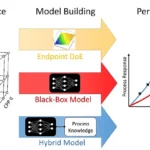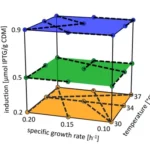
Hybrid Models facilitate Scale-Up and Digital Twins for tangential flow filtration
Updated: May 28, 2020
The benefits of bioprocess modeling are well known:
- increased process understanding
- faster process characterization
- enabling model predictive control
Moving towards Biopharma 4.0, these optional advantages become requirements for most bioprocess units. Filtration is one of the workhorses in the downstream process of biomolecules. However, filtration modeling received less attention in the past years compared to chromatography or upstream cultivations. In this post, we summarize the findings of our latest publication and the benefits of machine learning supported ultrafiltration modeling.
At first, setting up ultrafiltration seems a simple task. It’s basically about finding the correct membrane cut-off for your biomolecule, right? The fouling properties are often overlooked and can cause longer process times or even clogging. Parameters like pressure and feed flow are normally optimized for the starting point assuming that the optimum does not change throughout the filtration process. However, the process optima change with increasing membrane fouling, and we need models to predict these changes to be able to act accordingly.
The basic concept of our publication is given in the figure below.
- Flux data collected over a predefined range of inputs.
- We used this data to train the hybrid model.
- The model predicts the evolution of flux and protein concentration over time.

(1) Training data, (2) Hybrid model, Model testing on (3a) batch and (3b) fed-batch filtration.
With this straightforward approach, we predicted ultrafiltration processes for various combinations of proteins and membranes and evaluating the influence of process parameters and protein concentrations.
Batch and continuous fed-batch modeling
The TFF model can predict not only batch, but also fed-batch filtrations. During fed-batch filtrations fresh protein solution is added to the bulk container and keeping the volume constant until the protein solution is used up. This adds an additional layer of flexibility to our model predictions. In addition to varying input parameters, the model is then able to predict the outcome of larger bulk volumes that cannot be processed in one batch. This is often seen in process scale ups. Moreover, no retraining of the model is required since the flux and permeate volume are predicted in different steps.
“What would happen if process parameters change?”
An answer to this question is given by a digital twin. More specifically: “How much faster can a processes be run when increasing the transmembrane pressure?” or “How much longer will the filtration process take when the protein concentration is higher than usual?” (Video below). The digital twin does not require additional laboratory experiments since it is a computer simulation using the already trained filtration model. The digital twin takes advantage of the excellent interpolation capabilities of the machine learning part.

We hope we could give you a glance at the versatility and power of hybrid models for tangential flow filtration and how they help to transition towards Biomanufacturing 4.0.
For more information check out our publication.

